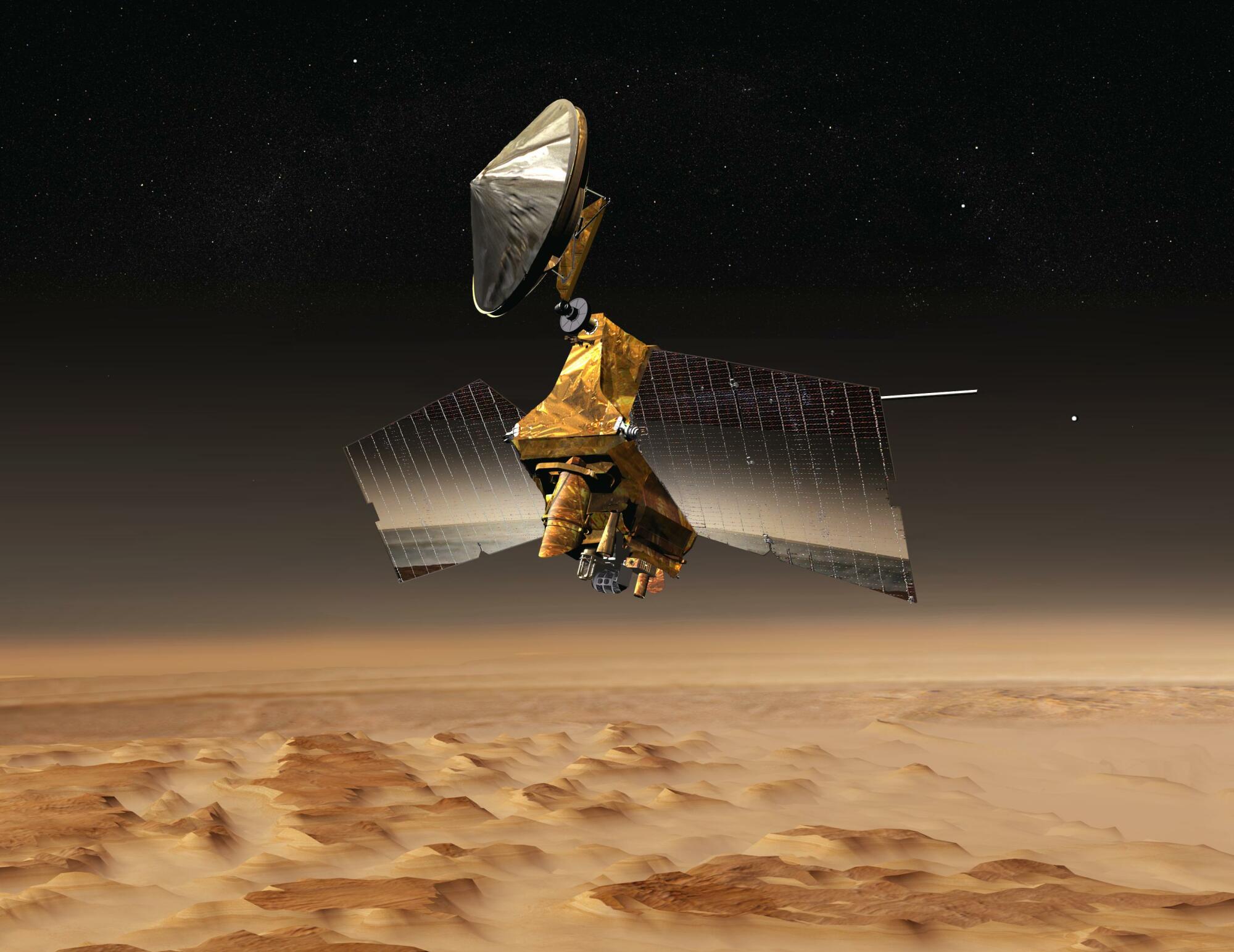NASA’s new Mars video is astonishing

Mars is a captivating desert.
Long ago stripped of its atmosphere, the arid world is now a profoundly dry, irradiated place. This allows NASA’s orbiting Martian spacecraft, the Mars Reconnaissance Orbiter, to capture rich imagery of the planet’s dried-up streams, impact craters, evolving landscape, and beyond.
The orbiter holds a powerful camera, called the High Resolution Imaging Experiment, or HIRISE, which can spot things as small as a kitchen table. Recently, the camera captured vivid footage of rippled, volcanic terrain inside an ancient, more than 170-mile-wide crater.
You can view the region, which is dubbed “Aram Chaos,” below. The HIRISE team, which operates the NASA camera at the University of Arizona, put together the slow-moving video, which pans across a detailed image of the extraterrestrial desert. They call it “Chaos, Reconsidered.”

In the footage, scientists used a filter on the camera to better reveal elements of Aram Chaos. You can see lots of blue, representing a type of rock called basalt, which is formed from volcanic activity. Mars is a planet that once teemed with lava flows and erupting volcanoes; in fact, the largest volcano in our solar system, Olympus Mons (currently dormant), is found on the Red Planet.
The surface of Aram Chaos looks largely rumpled and disordered. This was caused by molten rock or water movement below the Martian ground, the HIRISE team explains.
Elsewhere on Mars’ surface, NASA’s exploration rovers are zapping and sampling rocks as they sleuth for hints of past habitability and even primitive life, if it ever existed. The space agency’s Perseverance rover — a car-sized laboratory on six wheels — is rumbling through another crater, the Jezero Crater, a place planetary scientists believe once hosted a lake and vigorous rivers. “This delta is one of the best locations on Mars for the rover to look for signs of past microscopic life,” NASA has said.
Want more science and tech news delivered straight to your inbox? Sign up for Mashable’s Light Speed newsletter today.
Planetary scientists have hi-tech eyes both above and on the surface, so they’ll continue to reveal more insights about our nearby cosmic neighbor. But, remember, some of Mars’ best kept secrets might lie below the ground.
